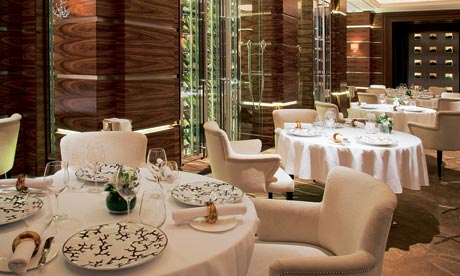Recently I attended an evening for ‘influential PA’s in Mayfair’. This doesn’t necessarily mean I am influential on my boss (although I’d like to think it does), but rather that he is an influential person and I'm the one who controls his schedule. This isn’t the only thing I manage, however.
My morning starts at whatever early time CEO calls to ask me to pick up some medication for him or book a table at a certain place. Often these things require being written down and taking action immediately – not the sort I can put off in favour of a lie-in. My journey to the office takes 40 minutes, but getting out of Oxford Circus feels like hours! CEO is currently in America for a month over Christmas followed by a business trip causing a friend to say ‘that’s great! Don’t you have less work?’ Oh no. I have work but it’s running 5-8 hours behind UK time, so at 3am I’m getting calls from him to cancel a dinner reservation, add a trip to Mexico to his flight schedule and book a car for 5 minutes time. There are days when I feel like Andrea Sachs from The Devil Wears Prada, running around like a headless chicken whilst trying to locate an unpublished manuscript or help plan an A-list event without paying for any of it. At 6.30pm at the end of a long working day, in the same tone as Miranda Priestly, he might mutter from his desk: ‘Get me Patrick’.
I sit at my iMac imagining all the other PA's at the receiving end of my emails to be snooty and judgemental, in black sleek outfits, towering Louboutin’s (what else) and hair pulled tightly into a bun. I feel inexperienced with all I’m expected to handle - I’m trusted with insurance forms, car MOTs and tax renewal forms, when I don’t even do my own! This is how I’ve learnt to pay overdue road tax, fix an engine light after he forgot to fill his beautiful Bentley with fuel, sort mobile phone bills and pay daily parking fines.
A dreaded call seconds before his flight takes off (literally, MOMENTS) and I fly into a panic. CEO is the sort to regularly miss his flights, and I immediately visualise my evening spent with my phone glued to my ear, liaising between our flight company and CEO, who will call me up in between the airline calls to check on progress, and then once a new flight is in place, announce he will stay in an overly-expensive hotel for another night instead and to move the flight to the following day. With a HUGE sigh of relief on my side, he instead tells me he has lost his kindle somewhere in Japan. The week before it was his iPhone in Milan, and his iPad in the magazine pocket on Eurostar Paris. And it’s my lucky self to call up every airline, lost property office, chauffeur, and hotel concierge to see if it has been handed in. In the list above, the only successfully returned item was the iPhone 6, which required verbally guiding CEO around the streets of Milan like a comedy spy escapade using the ‘Find my iPhone’ app on my computer to locate his other phone. It truly felt like a ‘Misson Accomplished’ once he was reunited with his phone. The story of his old PA receiving a baffled call from him one time: ‘Nora, why am I in Brussels?’ after boarding the Eurostar to Brussels instead of Paris quite by mistake - and without realising this error until arriving at the wrong destination - sends the office into hysterics each time it is recalled. I am still trying to come up with a way to glue CEO’s personal effects to his body…
Plenty of times I end up rescheduling rescheduled meetings, and every so often - to keep me on my tippy toes - he creates his own agenda without my knowledge until he instructs me to cancel all meetings I have carefully manoeuvred into his tight schedule for that day - and often last minute. Other tasks include sourcing and wrapping up birthday and Christmas presents for family members, and keeping a steady supply of Badoit: the only water CEO will drink.
Most evenings I am able to leave the office at a reasonable time (provided CEO has left the building), much to the annoyance of the 'sloggers' who find some form of satisfaction in staying in the office until 9pm. All I need is an internet connection and my Blackberry, in the event that CEO throws a crisis at me - without the need to be glued to my office chair.
I dream of getting mugged and acting terrified, whilst joyfully handing over my work Blackberry instead, and perhaps wine intake has increased since taking over as PA - something I aim to combat as a New Year’s resolution much to the disappointment of my gin-distilling boyfriend. I am learning to combat the trauma of this 24/7 job by regular blogging and heading off for an evening run where I can leave my Blackberry at home. Or just having reeeealllyyy long showers - I’m not so highly-strung that I take my phone into the bathroom with me. Yet.





















